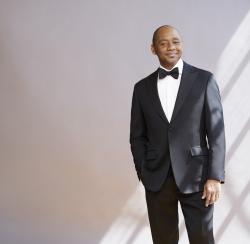
Classical or Jazz? Branford Marsalis bridges both worlds of music in Allentown Symphony Orchestra ‘Opening Gala’
The 2016-17 season-opening Allentown Symphony Orchestra classical music concerts will be long-remembered for a Lehigh Valley world premiere by a well-known musician, band leader and composer.
Branford Marsalis and the Allentown Symphony perform Villa-Lobos’ “Fantasia for Saxophone and Orchestra” in an updated transcription of the work.
Marsalis headlines the “Opening Gala” for the Allentown Symphony Orchestra ”Classical Series,” 7:30 p.m. Oct. 15 and 3 p.m. Oct. 16, Miller Symphony Hall, Allentown.
The program, conducted by Diane Wittry, Allentown Symphony Orchestra Music Director, in addition to Marsalis performing Villa-Lobos’ “Fantasia for Saxophone and Orchestra” and Villa-Lobos’ “Bachianas Brasileiras” No. 5 Aria (Cantilena) and Dansa (Martelo), includes Villa-Lobos’ Sinfonietta No. 1 (“A memoria de Mozart”), and Beethoven Symphony No. 3 (“Eroica”).
The Villa-Lobos’ “Fantasia for Saxophone and Orchestra” work on the Allentown Symphony concert program has a special place in the repertoire of Marsalis, who grew up in a household filled with music in Breaux Bridge, La. His mother, Dolores, is a jazz singer and substitute teacher. His father, Ellis, is a pianist and music professor. His brothers Jason, Wynton, Ellis III and Delfeayo are also jazz musicians. The New York Times described the Marsalis family as “jazz’s most storied living dynasty.”
“The piece [‘Fantasia for Saxophone and Orchestra’] is on the first classical record I ever got. I played the piece and liked it and didn’t like it,” Marsalis says during a phone interview the day before he turned 56 on Aug. 26.
“A good friend of mine, Paula Van Goes, saxophone professor at the University of Brazilia, Brazil, went to the library where the Villa-Lobos music is archived. She noticed that the piece was originally written in a different key.
“I like the piece in the key that the original was written. It was originally published in E flat. It was originally written in F. The person who originally played it played a tenor saxophone not a soprano saxophone and he lowered it one [whole] step. And the publishers published it in the key that he did it for the premiere.